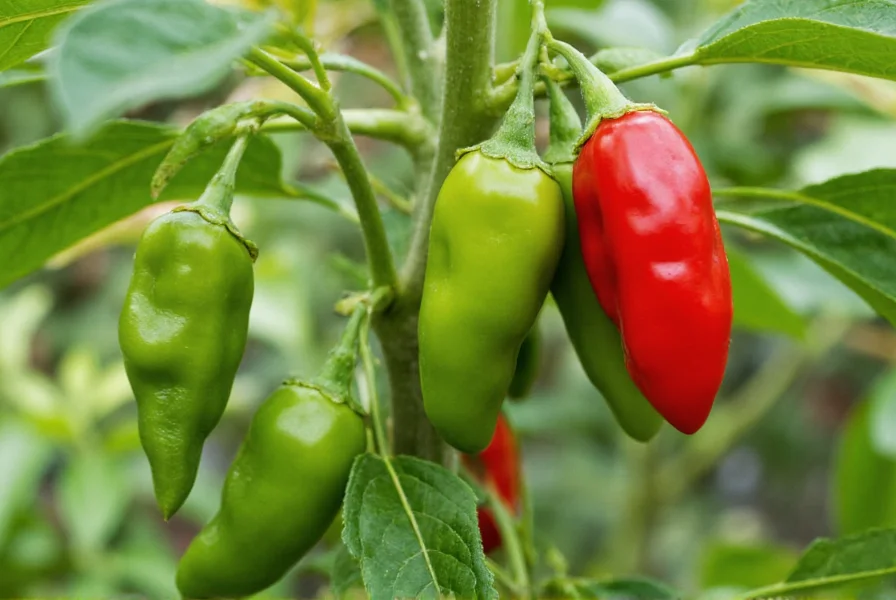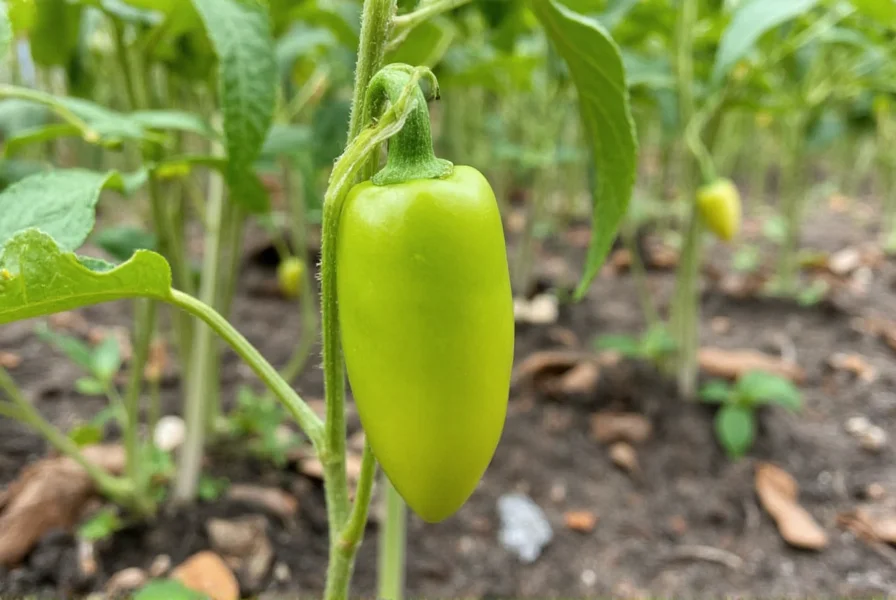Understanding how pepper plants grow helps gardeners cultivate successful harvests whether in backyard gardens or commercial operations. Peppers belong to the Capsicum genus and include both sweet bell peppers and various chili pepper varieties. These warm-season plants follow a predictable growth cycle when provided with proper conditions, making them relatively straightforward to grow with the right knowledge.
The Complete Growth Cycle of Pepper Plants
Pepper plants progress through several distinct developmental stages, each with specific requirements and characteristics. Knowing these stages helps growers provide appropriate care at each phase.
Seed Germination (7-21 Days)
Pepper seeds require warm soil temperatures between 75-90°F (24-32°C) for optimal germination. Unlike many plants, pepper seeds germinate slowly—typically taking 7-21 days. The seed absorbs moisture, the protective seed coat splits, and the radicle (primary root) emerges downward while the shoot pushes upward toward light. Successful germination depends on consistent moisture without waterlogging and proper warmth.

Seedling Development (4-6 Weeks)
After germination, pepper seedlings develop their first true leaves beyond the initial cotyledons. During this stage, plants establish their root system and begin photosynthesis. Seedlings need bright, indirect light for 12-16 hours daily and consistent moisture. Many growers start pepper seeds indoors 6-8 weeks before the last frost date to give plants a head start, as peppers require a long growing season.
Vegetative Growth (4-8 Weeks)
As pepper plants mature, they enter a vigorous vegetative growth phase where they develop stems, branches, and foliage. This stage requires nitrogen-rich nutrients to support leaf development. Plants typically reach 12-24 inches in height during this phase. Proper spacing (18-24 inches between plants) ensures adequate air circulation and light penetration. Consistent watering prevents blossom end rot later in the season.
Flowering Stage (2-3 Weeks)
When daytime temperatures consistently exceed 70°F, pepper plants begin producing small white flowers. These self-pollinating flowers contain both male and female reproductive structures. Adequate calcium levels in the soil prevent blossom drop. Some gardeners gently shake plants to improve pollination. The flowering stage represents the transition from vegetative growth to fruit production.
Fruit Development and Ripening (2-8 Weeks)
After successful pollination, peppers begin developing from the base of the flower. Initially green and firm, peppers gradually change color as they mature—red, yellow, orange, or purple depending on variety. The ripening process involves complex biochemical changes that develop flavor compounds and capsaicin (in hot peppers). Most peppers reach full size within 2-3 weeks but continue ripening for another 1-5 weeks to develop optimal flavor and color.

Optimal Growing Conditions for Pepper Plants
Understanding how pepper plants grow in different conditions helps gardeners optimize their cultivation practices. Several environmental factors significantly impact pepper growth and productivity.
| Growth Factor | Optimal Range | Effects of Deviation |
|---|---|---|
| Temperature | 70-85°F (21-29°C) | Cold below 55°F stunts growth; heat above 90°F causes blossom drop |
| Soil pH | 6.0-6.8 | Outside range reduces nutrient availability, causing deficiencies |
| Sunlight | 6-8 hours daily | Less light produces weaker plants with fewer fruits |
| Water | 1-2 inches weekly | Inconsistent watering causes blossom end rot and fruit cracking |
Soil Requirements for Healthy Pepper Growth
Peppers thrive in well-draining, loamy soil rich in organic matter. Heavy clay soils retain too much moisture, increasing disease risk, while sandy soils drain too quickly. Amending soil with compost improves structure and nutrient content. Raised beds (8-12 inches high) provide excellent drainage and warmer soil temperatures, which promotes faster pepper plant growth. Mulching with organic materials helps maintain consistent soil moisture and temperature.
Watering Practices for Optimal Pepper Development
Consistent moisture is critical for pepper growth, especially during flowering and fruit set. Irregular watering causes blossom end rot—a calcium deficiency that appears as dark, sunken spots on fruit bottoms. Drip irrigation delivers water directly to roots while keeping foliage dry, reducing disease risk. Water early in the day to allow foliage to dry before evening. During hot, dry periods, peppers may need watering every 2-3 days rather than weekly.
Common Challenges in Pepper Cultivation
Even with proper knowledge of how pepper plants grow naturally, gardeners encounter various challenges that affect plant health and yield.
Pests Affecting Pepper Plants
Aphids, spider mites, and pepper weevils commonly attack pepper plants. Aphids cluster on new growth, sucking sap and transmitting viruses. Spider mites create fine webbing on leaf undersides, causing stippling. Pepper weevils lay eggs inside fruit, with larvae feeding internally. Regular inspection, insecticidal soaps, and introducing beneficial insects like ladybugs help manage these pests without harsh chemicals.
Diseases Impacting Pepper Growth
Pepper plants face several fungal, bacterial, and viral diseases. Phytophthora blight causes rapid plant collapse in wet conditions. Bacterial spot appears as water-soaked lesions on leaves and fruit. Tobacco mosaic virus creates mottled leaf patterns and stunted growth. Crop rotation (avoiding planting peppers in the same spot for 3+ years), proper spacing for air circulation, and disease-resistant varieties help prevent these issues.
Environmental Stressors
Temperature extremes significantly impact pepper growth timeline and development. Cold temperatures below 55°F slow growth and prevent fruit set. Excessive heat above 90°F causes blossom drop. Sudden temperature fluctuations stress plants. Wind can damage stems and increase water loss. Using row covers during cool periods and shade cloth during extreme heat helps mitigate these environmental challenges.
Practical Tips for Successful Pepper Cultivation
Implementing these evidence-based practices enhances your understanding of how to grow peppers successfully in various conditions.
Starting Pepper Seeds Indoors
Begin pepper seeds 8-10 weeks before your last expected frost date. Use seed starting mix in individual cells to prevent root disturbance during transplanting. Maintain soil temperature at 80-85°F using a heat mat. Provide strong light (grow lights work best) for 14-16 hours daily to prevent leggy growth. Begin fertilizing with a balanced liquid fertilizer when seedlings develop their first true leaves.
Transplanting Pepper Seedlings
Transplant peppers after all danger of frost has passed and night temperatures remain above 55°F. Harden off seedlings by gradually exposing them to outdoor conditions over 7-10 days. Plant at the same depth they grew in containers—peppers don't benefit from deep planting like tomatoes. Water thoroughly after transplanting and consider using plant protectors to shield young plants from wind and temperature fluctuations.
Supporting Mature Pepper Plants
As pepper plants grow and bear fruit, they often require support to prevent branch breakage. Install stakes or cages when transplanting to avoid root damage later. Tie main stems loosely to supports using soft plant ties. For heavy fruiting varieties like bell peppers, additional horizontal support helps distribute weight. Proper support improves air circulation and reduces disease risk by keeping fruit off the ground.
Harvesting Peppers at Optimal Ripeness
Peppers can be harvested at any stage, but flavor and nutrient content increase as they ripen. Cut peppers from plants with clean scissors or pruners rather than pulling to avoid damaging plants. Most peppers reach full size in 2-3 weeks after fruit set but continue developing color and flavor for another 1-5 weeks. Fully ripe peppers have higher vitamin content and sweeter flavor. Regular harvesting encourages continued production throughout the season.
Conclusion
Understanding how pepper plants grow—from seed germination through fruit development—empowers gardeners to create optimal conditions for healthy plants and abundant harvests. By providing appropriate soil, water, temperature, and care throughout each growth stage, you can successfully cultivate peppers whether you're growing sweet bell peppers or fiery chilies. The key to mastering pepper plant growth stages and requirements lies in observing your plants closely and adjusting care based on their specific needs and environmental conditions.
Frequently Asked Questions
How long does it take for peppers to grow from seed to harvest?
Most pepper varieties take 60-150 days from seed to harvest, depending on the specific type. Bell peppers typically mature in 60-90 days after transplanting, while hotter varieties like habaneros may require 90-150 days. Starting seeds indoors 8-10 weeks before your last frost date gives peppers the long growing season they need.
Why are my pepper plants flowering but not producing fruit?
Pepper plants may flower but fail to set fruit due to temperature extremes (below 60°F or above 90°F), inconsistent watering, lack of pollination, or nutrient imbalances. Ensure consistent moisture, proper temperatures, and consider gently shaking plants to improve pollination. Excessive nitrogen can promote leaf growth at the expense of fruit production.
How often should I water pepper plants for optimal growth?
Pepper plants need about 1-2 inches of water per week, but consistency matters more than quantity. Water deeply 2-3 times weekly rather than daily light watering to encourage deep root growth. During hot, dry periods, you may need to water every 2-3 days. Check soil moisture by inserting your finger 2 inches deep—water when the soil feels dry at that depth.
Can peppers grow in containers, and what size do they need?
Yes, peppers grow well in containers with proper care. Choose containers with drainage holes that hold at least 3-5 gallons of soil (larger for bigger varieties). Dwarf and smaller pepper varieties can grow in 2-3 gallon containers, while larger bell peppers and hot varieties need 5-gallon containers or larger. Container-grown peppers require more frequent watering and feeding than garden-grown plants.
What's the difference between how sweet peppers and hot peppers grow?
Sweet peppers (like bell peppers) generally grow larger plants with thicker walls and mature faster (60-90 days). Hot peppers typically have smaller, more compact plants with thinner walls and longer maturation periods (90-150 days). Hot peppers often require slightly warmer temperatures for optimal growth and produce capsaicin, the compound that creates heat, which develops as the fruit ripens.











 浙公网安备
33010002000092号
浙公网安备
33010002000092号 浙B2-20120091-4
浙B2-20120091-4